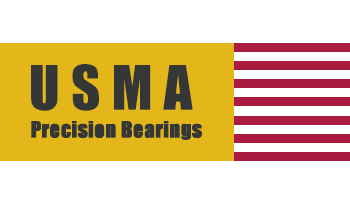NEWS
DEVELOP BY TECHNOLOGY,SURVIVE BY QUALITY
Development Trends of the US Bearing Industry in 2025
Views: 1 Author: Site Editor Publish Time: 2025-06-24 Origin: Site











Core Trends Analysis of Local Development Trends in the US Bearing Industry in 2025
1. Technological breakthrough direction
High end bearings continue to lead the way
Aerospace field: Maintaining global technological advantages, deep groove ball bearings have a penetration rate of over 70% in key components of satellites and spacecraft, and a market share of 65% in bearings that can withstand extreme temperature differences (-60 ℃~300 ℃).
Accelerated research and development of magnetic levitation bearings: Government led technology conference promotes the application of oil-free bearings, with an 18% increase in investment by 2025. However, China has added over 400 new patents, creating pressure to catch up.
Localization of robot core components
Imposing a punitive tariff of 132% on harmonic reducer bearings and planetary roller screws, forcing local enterprises to expand production; But Chinese companies such as Wuzhou Xinchun have already entered the supply chain, and the cost of some components is only 60% of that of American companies.
2. Localization process
Manufacturing Reflux: Three new smart factories have been added to the Great Lakes Industrial Zone, focusing on new energy vehicle bearings and increasing annual production capacity by 400000 sets.
Friendship Bank Outsourcing ": Mexico and Vietnam undertake 25% of the production capacity of mid to low end bearings..
Green transformation: EU recycling rate of 90%, new regulations force technological upgrades, ceramic bearing penetration rate increases to 12%
3. Evolution of the market structure
Structural differentiation of demand
Expansion of high-end market: Deep groove ball bearings benefit from the growth of new energy vehicles, and the North American market size will increase by 4.4% annually (to reach US$3.48 billion in 2030);
Shrinkage of low-end and mid-end: Tariffs have led to rising costs, and the import volume of agricultural machinery and general machinery bearings has dropped by 18%, and the capacity utilization rate of local enterprises is only 65%.
New trend of international competition
Technological blockade backfires: Chinese companies have indirectly entered the US supply chain by acquiring European aviation bearing departments to obtain airworthiness certification;
Regional cluster effect: Japanese companies have closed factories in Southeast Asia and turned to China's Yangtze River Delta, focusing on the synergy advantages of the industrial chain (logistics costs have been reduced by 22%).

